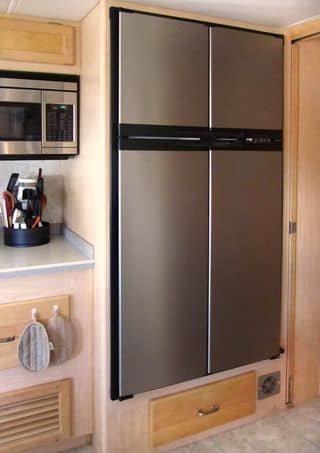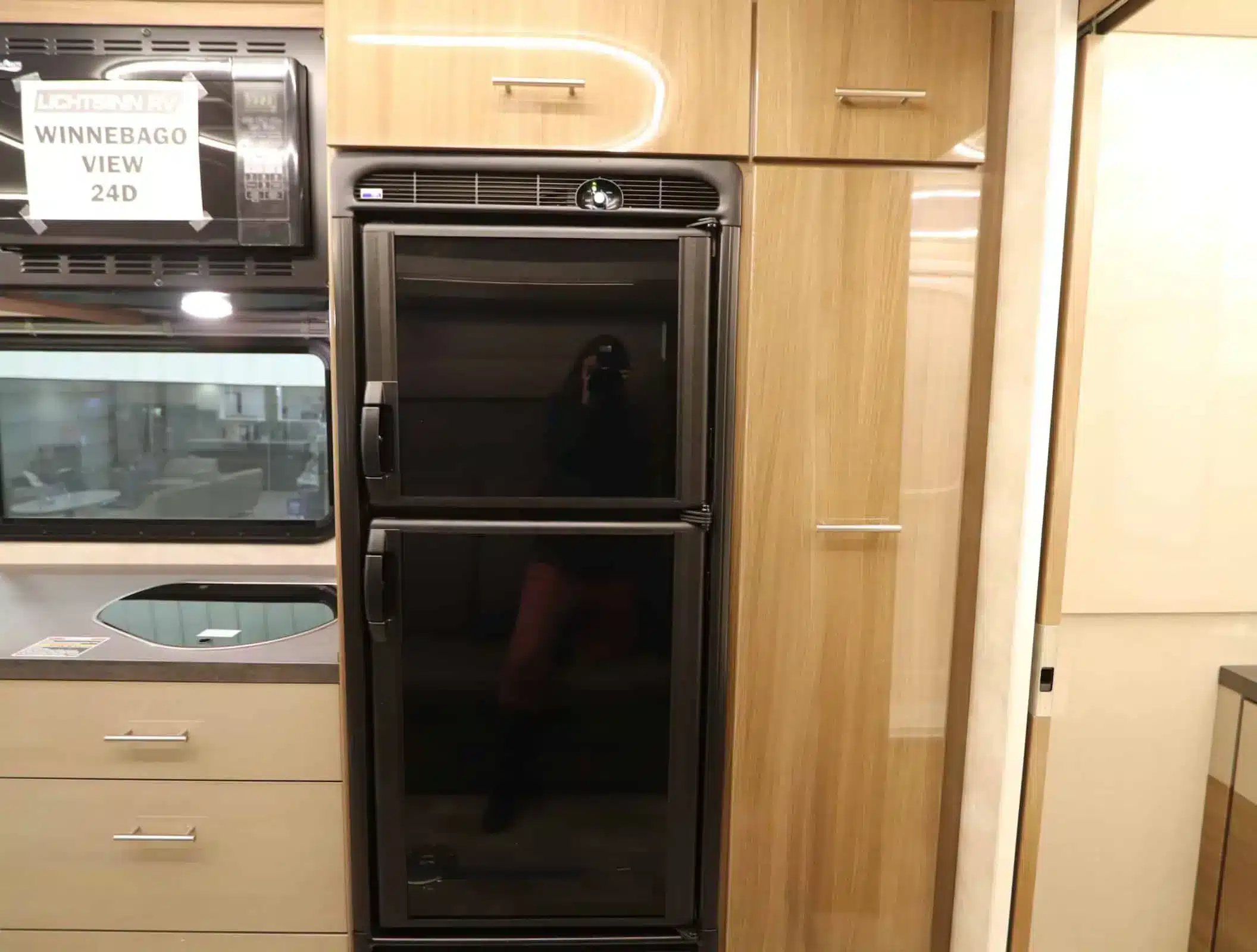An RV refrigerator is a vital appliance that keeps your food and drinks cold and fresh while you travel. However, there may be times when you need to remove your RV refrigerator, either for repair, replacement, or upgrade. Removing an RV refrigerator can be a challenging task, especially if you have a large or heavy unit. You may need some tools, skills, and help to do it safely and successfully.
To remove an RV refrigerator, you need to measure the fridge and the space where it resides, as well as the entrance of the RV. Then, you need to remove the caps, screws, and frames that hold the fridge in place, both inside and outside the RV. You also need to disconnect the power sources, such as DC, AC, and propane. Finally, you need to slide the fridge out of the shelf and push it out through the door or the window. The steps may vary depending on the type and model of the fridge.
What You Need to Remove an RV Refrigerator
To remove an RV refrigerator, you will need the following items:
- A tape measure
- A screwdriver
- An adjustable wrench
- A utility knife
- A pry bar
- A dolly or a cart
- A helper or two

How to Remove an RV Refrigerator in 4 Steps
Here are the steps you need to follow to remove an RV refrigerator:
- Measure the fridge and the space: Before you start removing your RV refrigerator, you need to measure its dimensions and weight. You also need to measure the space where it resides in your RV, as well as the entrance of your RV. This will help you determine if you can slide or lift the fridge out of its position and if you can fit it through the door or the window. You may need to remove some furniture or fixtures in your RV to create more space for removing the fridge.
- Remove the caps, screws, and frames: Next, you need to remove any caps, screws, or frames that hold your RV refrigerator in place. You may need to access both the inside and outside of your RV to do this. You may also need to cut or pry off any sealant or caulking around the fridge. Be careful not to damage any wires or pipes while doing this. Keep all the hardware in a safe place for future use.
- Disconnect the power sources: Then, you need to disconnect all the power sources that supply your RV refrigerator. This may include DC (direct current), AC (alternating current), and propane (LP gas). You need to turn off and unplug any switches or outlets that connect to your fridge. You also need to shut off and detach any propane tanks or lines that connect to your fridge. You may need to use a wrench to loosen any fittings or valves. Be careful not to cause any leaks or sparks while doing this.
- Slide or lift the fridge out: Finally, you need to slide or lift your RV refrigerator out of its shelf or cabinet. You may need to use a dolly or a cart to support and move your fridge. You may also need some helpers to assist you with lifting or pushing your fridge. You need to be careful not to scratch or dent your fridge or your RV while doing this. You also need to avoid any injuries or accidents while handling your fridge.

How to Install a New RV Refrigerator
If you are planning to install a new RV refrigerator after removing your old one, you need to follow some steps in reverse order. Here are some tips:
- Choose a compatible model: You need to choose a new RV refrigerator that is compatible with your RV’s space, power sources, and style. You may want to measure your old fridge and compare it with the new one before buying it. You may also want to check the features and functions of the new fridge and see if they suit your needs.
- Prepare the space: You need to prepare the space where you will install your new RV refrigerator. You may need to clean and repair any damages caused by removing your old fridge. You may also need to adjust or modify any wiring or piping that connect to your new fridge.
- Connect the power sources: You need to connect all the power sources that supply your new RV refrigerator. This may include DC (direct current), AC (alternating current), and propane (LP gas). You need to plug in and turn on any switches or outlets that connect to your fridge. You also need to attach and open any propane tanks or lines that connect to your fridge. You may need to use a wrench to tighten any fittings or valves. Be careful not to cause any leaks or sparks while doing this.
- Secure the fridge in place: You need to secure your new RV refrigerator in place with caps, screws, or frames. You may need to access both the inside and outside of your RV to do this. You may also need to apply some sealant or caulking around the fridge. Be careful not to damage any wires or pipes while doing this.

Conclusion
An RV refrigerator is a useful appliance that keeps your food and drinks cold and fresh while you travel. However, you may need to remove it for various reasons, such as repair, replacement, or upgrade. Removing an RV refrigerator can be a challenging task, but you can do it with some tools, skills, and help.
To remove an RV refrigerator, you need to measure the fridge and the space where it resides, as well as the entrance of the RV. Then, you need to remove the caps, screws, and frames that hold the fridge in place, both inside and outside the RV. You also need to disconnect the power sources, such as DC, AC, and propane. Finally, you need to slide the fridge out of the shelf and push it out through the door or the window.




